Spring is in the air. It’s always exciting to see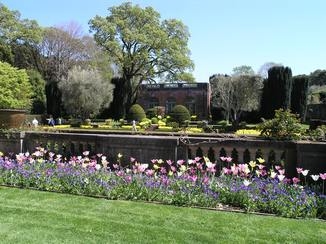
One of my long term goals is to view the great gardens in the Santa Cruz Mountains. If you have a garden that you think others would like to hear about and you are willing to share it with me, please contact me. I’d love to spend time with you in your garden.
There’s so much to do now in the garden. If you are feeling overwhelmed here are some suggestions for the more important to-do’s.
* Check drip systems for leaks or clogged emitters. Flush sediment from filters and check screens for algae. You may need to add emitters if plants have grown significantly.
* Finish pruning and clean-up of trees, shrubs, vines and perennials. This includes fireblight die-back on pears, apples, hawthorn, pyracantha, photinia, crabapple quince and toyon., Prune out and discard diseased branches making the cut at least 6-8" below blighted tissue. Clean the pruning blades with alcohol or a 1:5 solution of household bleach to prevent spread of the disease. Also finish pruning and cutting back perennials and ornamental grasses. Go ahead and give grasses a 3-5" crewcut so fresh growth can emerge. Cut back old foliage of maiden hair ferns to allow new growth to take center stage. If you have Western sword ferns or another type that has winter or thrip damage, remove shabby looking fronds. Even if you have to cut back the entire fern it’s OK. It will regrow in just of couple of months. Prune any other frost damaged plants when you see new growth begin.
* Spread fresh compost around all your plants. Good soil is the secret to successful gardening. The first principle of organic gardening is to feed the soil and it will feed the plant. Remember that all gardening used to be organic. Layer compost and or mulch on top of the soil and let it slowly decompose and filter down into the earth.
* As you plant new additions to the garden add organic matter to the soil. If your garden’s soil is sandy, organic matter enriches it and allows it to hold water more efficiently. If your soil tends toward clay, organic matter will loosen it up and improve drainage. In well-amended soil, plants grow deep roots, are hardier and more resistant to disease. Organic matter, such as compost, planting mix and well-rotted manure, boosts nutrition and improves soil structure.
* Fertilize if you haven’t already done so. Citrus, shrubs and fruit trees just emerging from dormancy are begging for their first meal of the season. Lawns begin their spring growth now also and benefit from a boost of nitrogen. You can also spread a thin layer of composted manure over you lawn. Leaving you grass clippings on the lawn will benefit it by shading the roots as it get warmer and as they break down they help feed it, too. Perennials benefit from both a fresh layer of compost or manure and a light application of balanced fertilizer. They respond to phosphorus especially in the spring for root growth, stem sturdiness and flower development. Wait until azaleas, camellias and rhododendron have finished blooming before feeding them.
* The most important to-do for March is to take time out and enjoy your garden and our beautiful surroundings. Those last few weeds will be there tomorrow but you’ll never get another today.

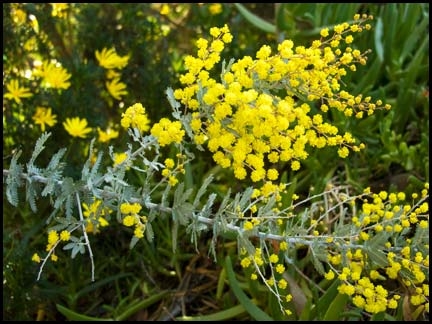
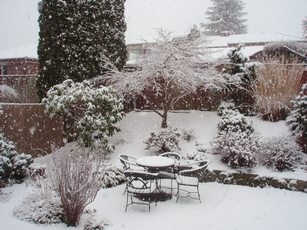 tly through the snow. Ornamental grasses, not yet cut back, made me think of the prairie in winter. Japanese maples of every type showed off their exquisite form cloaked with a few inches of snow. Everywhere tall evergreen trees as well as dwarf forms anchored the landscape especially in winter.
tly through the snow. Ornamental grasses, not yet cut back, made me think of the prairie in winter. Japanese maples of every type showed off their exquisite form cloaked with a few inches of snow. Everywhere tall evergreen trees as well as dwarf forms anchored the landscape especially in winter.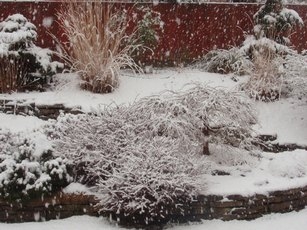 Water conservation is important here, too. Although this area receives lots of winter rain and snow in the mountains by summer’s end, rivers and reservoirs in the Cascades, ground water levels and collected snowmelt reserves are gone. A little rain falls in the summer but it’s still a Mediterranean climate here. Water needs of people compete with those of migrating salmon and other wildlife and vegetation. Climatologists are predicting that climate change may mean less snow pack in the future.
Water conservation is important here, too. Although this area receives lots of winter rain and snow in the mountains by summer’s end, rivers and reservoirs in the Cascades, ground water levels and collected snowmelt reserves are gone. A little rain falls in the summer but it’s still a Mediterranean climate here. Water needs of people compete with those of migrating salmon and other wildlife and vegetation. Climatologists are predicting that climate change may mean less snow pack in the future. 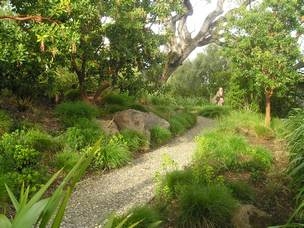 will improve the environment by conserving resources. It will require less maintenance and fertilizing, be balanced with our climate in mind and use less pesticides and water. Most of all it will be visually pleasing with lots of flowers. bees and butterflies.
will improve the environment by conserving resources. It will require less maintenance and fertilizing, be balanced with our climate in mind and use less pesticides and water. Most of all it will be visually pleasing with lots of flowers. bees and butterflies.  When do they occur each year? Phenology is a real science that has many applications. In farming and gardening, phenology is used chiefly for planting times and pest control. Certain plants give a cue, by blooming or leafing out, that it’s time for certain activities, such as sowing particular crops or insect emergence and pest control. Often the common denominator is the temperature.
When do they occur each year? Phenology is a real science that has many applications. In farming and gardening, phenology is used chiefly for planting times and pest control. Certain plants give a cue, by blooming or leafing out, that it’s time for certain activities, such as sowing particular crops or insect emergence and pest control. Often the common denominator is the temperature.  es and severely damaged another. About 60% of the Bonny Doon Ecological Reserve burned. It’s amazing to see the recovery already taking place. The bracken ferns came first, followed by the endangered Bonny Doon manzanita some of which have sprouted from their bases while 6" tall starts from seed are everywhere. The burned gnarled trunks rendered the landscape otherworldly and magical. Pockets of manzanitas that were spared by the fire were in full bloom dripping with clusters of delicate, white urn-shaped flowers. This manzanita is endemic to the Santa Cruz sandhills and does not occur anywhere else on the planet. Did you know that manzanita leaves are still used in Russia in the tanning industry due to their high tannic acid content?
es and severely damaged another. About 60% of the Bonny Doon Ecological Reserve burned. It’s amazing to see the recovery already taking place. The bracken ferns came first, followed by the endangered Bonny Doon manzanita some of which have sprouted from their bases while 6" tall starts from seed are everywhere. The burned gnarled trunks rendered the landscape otherworldly and magical. Pockets of manzanitas that were spared by the fire were in full bloom dripping with clusters of delicate, white urn-shaped flowers. This manzanita is endemic to the Santa Cruz sandhills and does not occur anywhere else on the planet. Did you know that manzanita leaves are still used in Russia in the tanning industry due to their high tannic acid content?